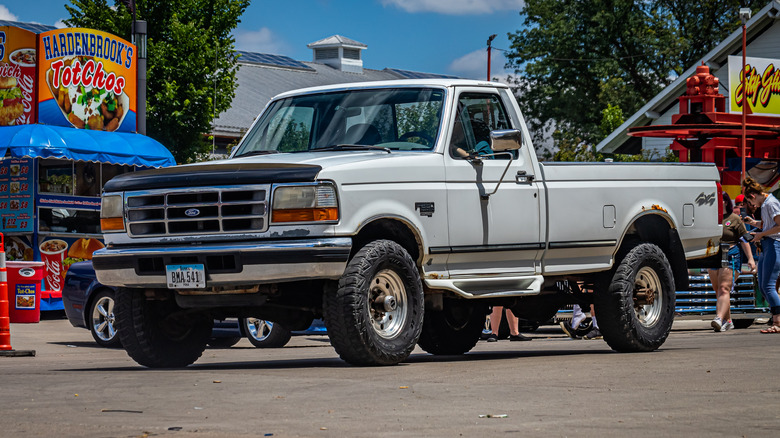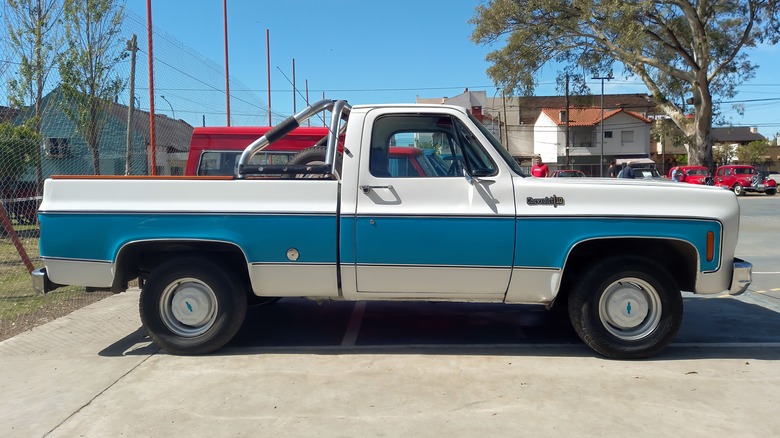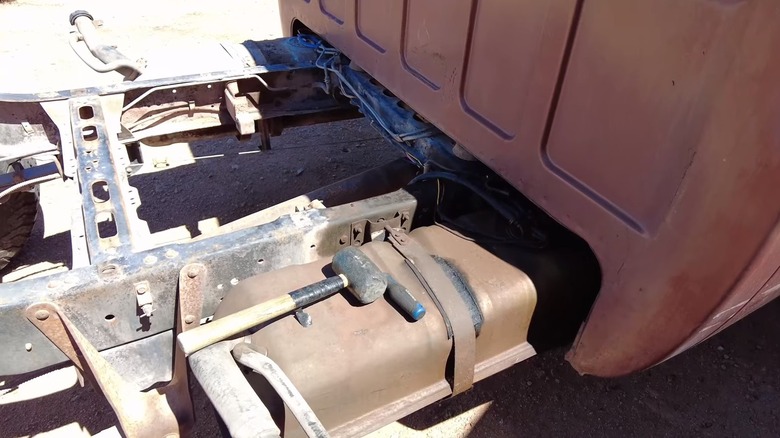Why Don't Trucks Have Dual Gas Tanks Anymore?
With over a century's worth of vehicle designs, concepts, and prototypes, there have been some interesting automobiles made to say the least. Take, for example, these '90s cars that had us scratching our heads. It wasn't just cars either, as there are several examples of the weirdest pickup trucks ever made as well. There are even more subtle examples of vehicle engineering that used to be common, but are now considered odd or even potentially dangerous. Take, for instance, older model trucks equipped with two gas tanks instead of one.
On the one hand, two fuel tanks can be beneficial under heavy workloads such as hauling large equipment and/or longer rides. Two smaller tanks instead of one large one could also offer engineers more options in terms of location, where a single tank may not fit properly. However, there were also some inconveniences and even hazards with these multiple tank configurations.
Today, other than a few options like the 2024 RAM 4500 Tradesman — which allows you to add 52 and 22-gallon dual fuel tanks for an additional $795 — this option has all but disappeared.
When and why were two fuel tanks a feature?
During the '70s, '80s, and '90s, multiple fuel tanks were much more common, particularly on Chevy and Ford series trucks. This design provided advantages for both the automotive manufacturers and truck buyers, which is why it lasted for so many years. In the early '70s through the late '80s, some of Chevy's trucks featured a side-saddle fuel configuration with a tank on each side of the bed. Ford placed its tanks (especially during the '80s) in the front and rear of the pickup and utilized a fuel tank selector valve.
Trucks were previously made with more than one fuel tank for several reasons, including space-saving design for engineers, extra fuel for drivers, and enhanced weight distribution. Some late-model trucks, like the earlier F series from Ford, couldn't make one large tank fit within the design. Pickup owners who used their vehicles for rugged and strenuous projects, such as heavy towing, benefitted from extra gas as hard-working trucks burn up more fuel. Lastly, in terms of balance, pickups with two tanks evenly spread out the weight of the fuel across the chassis.
What happened to dual gas tanks?
While there were some definite upsides to having two gas tanks on your truck, there were also some big downsides, and that caused automakers to move away from the configuration. One issue was the inconvenient experience you would have when refueling. You were required to pump gasoline into two separate tanks in order to completely fill up. Another issue was the valve system malfunctioning, which was the mechanism that would allow you to select between different tanks. These fuel selector valves experienced shorting, and even issues where one tank overfilled the other.
One of the most troubling problems with dual gas tanks involved Chevy's side saddle design, where the automaker put a tank on each side of the truck outside the frame. This meant that during collisions, these tanks were less protected and posed a greater risk of puncture, leading to fire.
According to The Center for Auto Safety, more than 2,000 fatal accidents involving fire occurred from 1973 to 2009 in Chevy trucks with side saddle fuel tanks. With advancements in fuel efficiency, the duel gas tank trucks have nearly all disappeared outside of some special commercial level trucks like the aforementioned RAM 4500 Tradesman. Another interesting aspect of truck design over the decades is their increasing dimensions, which could be another factor in making dual tanks unnecessary. Do you know how much bigger pickup trucks have gotten over the years?


